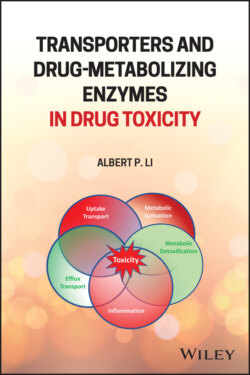Читать книгу Transporters and Drug-Metabolizing Enzymes in Drug Toxicity - Albert P. Li - Страница 35
2.5.1 CYP3A4
ОглавлениеMore than 34 SNPs of CYP3A4 have been included in the PharmVar, but generally they do not translate to significant interindividual variability [41, 42]. The observed variability could not be explained by the SNP variations in the coding and 5′‐flanking regions of CYP3A4 [63]. Instead, the variations that affect CYP3A4 expression are more relevant to drug metabolism. The cis genetic variant CYP3A4*22 has a 15389C>T substitution in intron 6, which results in decreased hepatic CYP3A4 expression. It has been suggested that CYP3A4*22 might be of clinical relevance to statin therapy, as the plasma concentration of the statin drugs (e.g. simvastatin and lovastatin) largely is dependent on CYP3A4 activity [64]. In a small cohort study the patients carrying a CYP3A4*22 allele required a significantly lower dose to reach target levels of low‐density lipoprotein‐cholesterol [65]. Moreover, CYP3A4 expression is also affected by the trans genetic variations. Polymorphisms in CYP3A4 regulators, including FoxA2/A3, HNF4a, PXR, and MDR1, have been suggested to explain ~24% of the interindividual variability in hepatic CYP3A4 expression [66]. Although CYP3A4 is the most abundant CYP in the liver and catalyzes the oxidation of a broad spectrum of drugs, little association has been established so far between CYP3A4 polymorphisms and DILI [6].
